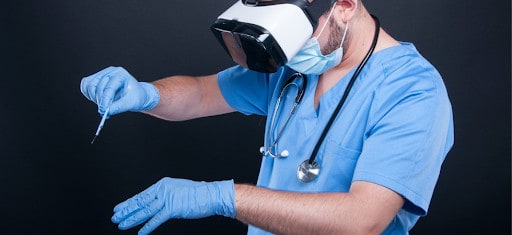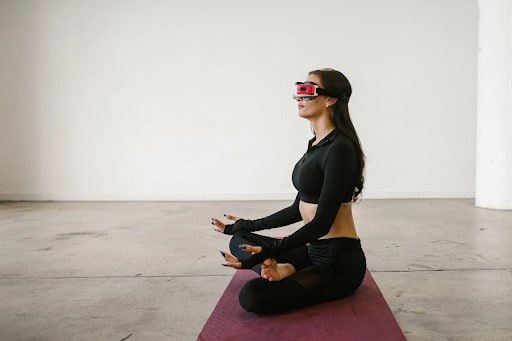
Just a few years ago, the concept of virtual reality was limited only to the gaming industry and the idea of using it for medical purposes seemed like an unattainable dream. These days, advanced VR tools are used in clinics around the world as a way to visualize different procedures and diseases. A VR headset is a device you fasten in front of your eyes, with a screen on the inside that shows a digital environment.
When you move your head, different sensors in the VR headset respond to your movements and then reflect the movements in the digital environment you have before your eyes. The scope of using virtual reality is limitless, from teaching and training new doctors, to helping doctors examine their diagnoses more closely.
In this article, we look at how VR is used in healthcare.
Medical Training
Modern technology is developing at a fast pace and offers new opportunities in creating quality experiences in teaching and training. With the help of virtual reality, students can be shown different places and situations in a similar way as if they were seeing them physically.
Today, any type of medical situation can be simulated by using VR. Students get to deal with the situation the same as in real life, and feedback and debriefing ensue, which allows them to learn from any potential mistakes they’ve made. Although the VR environment includes costs for programming, monitors, and other tools, its access is flexible and broad-based.
VR allows medical professionals to visualize the inside of the human body, unveiling certain inaccessible areas as computer graphics have made it possible for any part of the body to be recreated in great detail. Furthermore, the training can be conducted by using scenarios that mimic common surgical situations.
As minimally invasive surgery greatly benefits in reducing operating costs, complications, and time of recovery, VR-based training is a highly effective method of transferring skills to future surgeons. Despite some of the costs required for such training, the benefit of VR in medical training is that it includes a large number of students in each program, who obtain great knowledge from its use.
In-Home Physical Therapy
Patients who are prescribed physical therapy are often required to complete certain exercises at home, regularly. However, once patients leave a clinic or a therapy center, they rarely receive help and proper guidance, which causes them to lose interest in doing the exercises correctly and even lose motivation to stick to the doctor’s recommendation.
However, virtual clinics, such as XRHealth’s VR healthcare department, provide engaging treatments without the need for patients to leave their homes, and licensed therapists are there to support you on your path of in-home recovery as they work with you remotely by using a VR headset to optimize your treatment in real-time.
Physiotherapy combined with VR therapy allows physical therapy professionals the opportunity to give adaptive and personalized exercises to patients, which is especially important for those patients who have limited mobility, suffer from complex health problems, and those who are hindered from visiting their physiotherapist. Ultimately, this type of treatment motivates and encourages patients to complete the activity.
Pain Management
VR has been found especially helpful in the efforts of relieving pain and in the rehabilitation of patients who experience severe pain, particularly those who are recovering after having received a skin graft, during regular cleaning of burns wounds, and even when trying to make any daily injections more tolerable for small children.
It has been shown to effectively distract and in that way relieve the pain of such patients, even more so when the use of sedation or anesthesia is contraindicated.
Improving Mental Health and Reducing Stress
VR is currently being explored as a way to help people fight anxiety, relieve stress, and achieve a more relaxed mental state. There’s a method referred to as therapeutic VR where users wear a VR headset and are involved in a simulation designed to calm their mind and body. It has been proven very effective, even with people who weren’t previously familiar with mindfulness practices but managed to achieve meditative abilities very quickly.
General well-being is achieved by creating immersive VR relaxing environments to promote meditation and reduce stress. Different breathing mechanisms are used in conjunction with voice instructions and scenic views to help relax a person’s mind.
Final Thoughts
By reading this article, you come to understand how the future of healthcare is slowly but surely becoming a virtual experience and how VR plays an important and promising part in treating numerous health issues.
VR use in surgery, medical training, pain management, and its impact on mental health are just some examples of how VR profoundly benefits human health.





